5-day tour of Zhenjiang and Yangzhou, Jiangsu
Day 1 (February 4, 2019/New Year's Eve)
Shanghai → a service area on the way → Zhenjiang, Jiangsu (Ramada Zhenjiang Hotel) → Beigu Mountain → Beigu Bay Plaza → Hotel
Depart from Yangpu District, Shanghai City at 10:00 and drive to Zhenjiang City, Jiangsu Province. The total journey is 257.2 kilometers, passing through the Beijing-Shanghai Expressway and the Shanghai-Chengdu Expressway. The fee is about 105 yuan and the journey takes about three and a half hours.
12:00 Passing through the service area, lunch.
Depart from the service area at 12:40 and continue to drive to Zhenjiang City, Jiangsu Province.
Arrive at Zhenjiang City, Jiangsu Province at 14:00.
When talking about Zhenjiang, most people know Jinshan from the mythical story of "White Lady's water flooding Jinshan Temple" and then learn about Zhenjiang.
When you come to Zhenjiang, the traffic here always arrives unexpectedly early, which is a big boon for tourists. The ancient streets and the gray and dilapidated buildings make people feel like they are in an old movie. Although this place is not as gorgeous as other Jiangnan cities, it has its own unique cultural heritage.

Zhenjiang is a coastal city in eastern China, located in the southwest of Jiangsu Province. It was called "Runzhou" in ancient times and was the capital of Jiangsu Province during the Republic of China. It is an important part of the north wing center of the Yangtze River Delta, the core city of Nanjing Metropolitan Area and the modernization demonstration zone in southern Jiangsu; the Yangtze River and the Beijing-Hangzhou Grand Canal meet here to coordinate China's "River Overpass".
Zhenjiang is a nationally famous hometown of fishing and rice in the south of the Yangtze River. There are many scenic spots and historic sites in the city such as Jinshan Temple and Xijindu, as well as universities such as Jiangsu University and Jiangsu University of Science and Technology.
Arrive at Hua Hotel in Zhenjiang, Jiangsu at 14:15.
Check-in at 14:30.
14:45 Take a nap at the hotel.
Depart from the hotel at 15:30 and walk to the AAAAA Scenic Area in Beigu Mountain. The distance is 530 meters and the journey is 9 minutes.
Arrive at 15:40 at the AAAAA Scenic Area in Beigu Mountain and have fun.
Beigu Mountain AAAAA Scenic Area is located in the north of Zhenjiang, on the bank of the Yangtze River. It is called the "Three Jingkou Mountains" along with Jin and Jiao. It is located between the other two Shanjin Mountain and Jiaoshan Mountain, with an altitude of 55.2 meters.

Ganlu Temple sits high on the top of the peak, forming the characteristics of "Temple Crown Mountain". It is said that it was built in the first year of Ganlu of Dongwu in the Three Kingdoms (265 AD), and has been abandoned and built many times since then. The temple includes the main hall, Laojun Hall, Guanyin Hall, Jiangsheng Pavilion, etc. Although it is not large in scale, it is quite famous. Throughout the ages, tourists who have come to Zhenjiang have liked to visit here and search for the relics of Liu Bei's marriage recruitment.

Although Beigu Mountain is not tall, it has profound cultural connotations and has a reputation that ranks best in the world. There are many scenic spots and historic sites on the mountain and foot, including stone, tree, and scenery on each floor. Most of them are related to the historical facts and legends of the alliance of Sun Liu and the rejection of Cao Cao during the Three Kingdoms period.
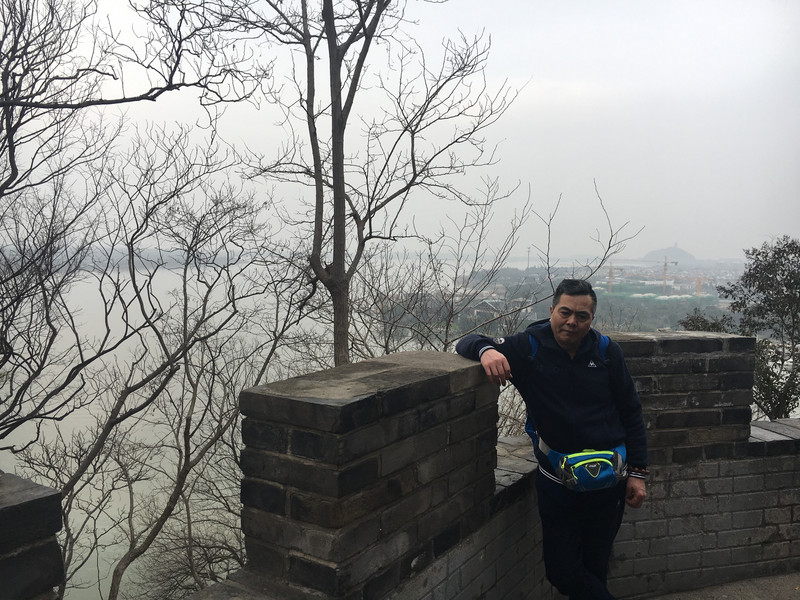


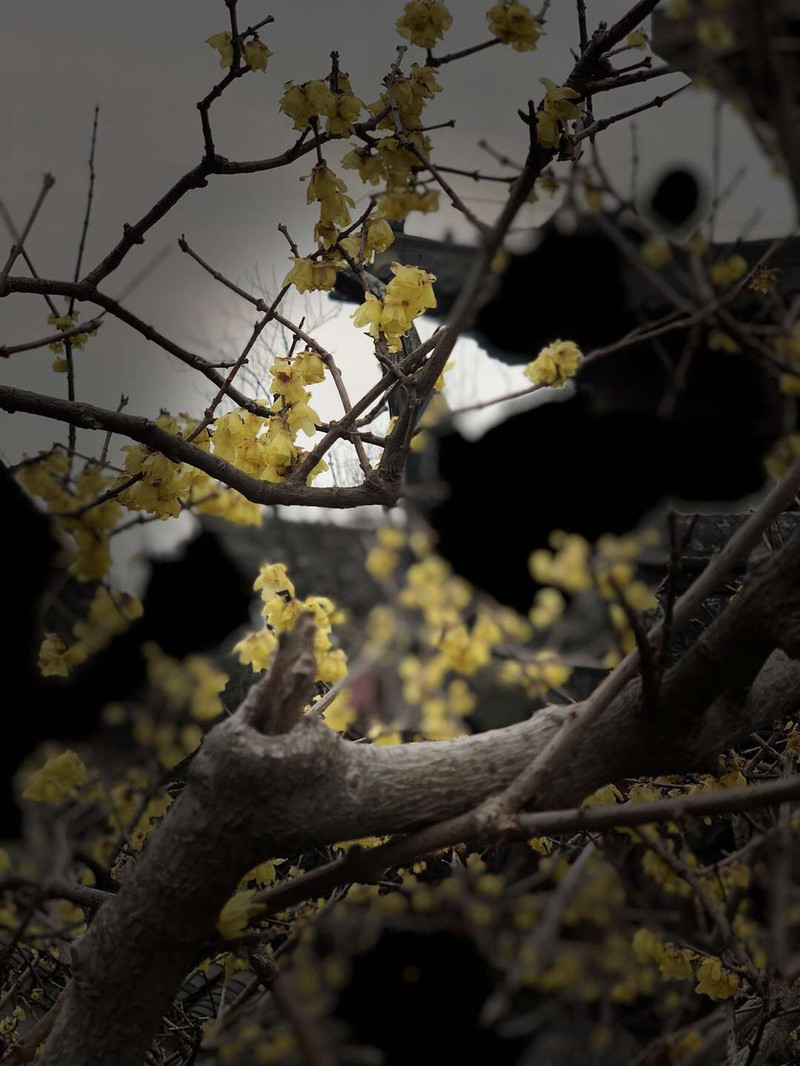




Depart from Beigu Mountain AAAAA Scenic Area at 16:30 and walk to Beigu Bay Square. The distance is 650 meters and the journey is 10 minutes.
Arrive at Beigu Bay Square at 16:45 and have fun.
Beiguwan Square is located in Beigu Mountain Scenic Area on Binshui Road, Jingkou District, Zhenjiang City (the intersection of Dongwu Road and Binshui Road). It is less than 1500 meters away from the central area of Dashikou, and it is two to three minutes 'drive away. At the foot of Beigu Mountain, among the three mountains of Jinshan, Jiaoshan and Beigu Mountain, it sits on the out-of-print resources of three mountains and one river, and enjoys the prosperity of the city's core. The 750,000-square-meter waterfront community cleverly combines Western classic architecture with the charm of eastern mountains and rivers to comprehensively reflect the humanistic care for the residents and continue a new chapter of life in Zhenjiang Bay Area.

18:00 Hotel dinner , New Year's Eve dinner.

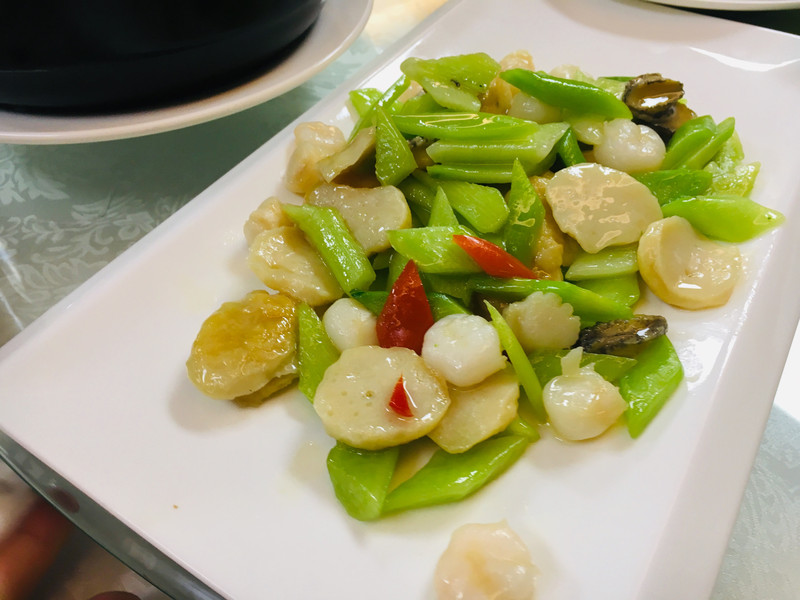













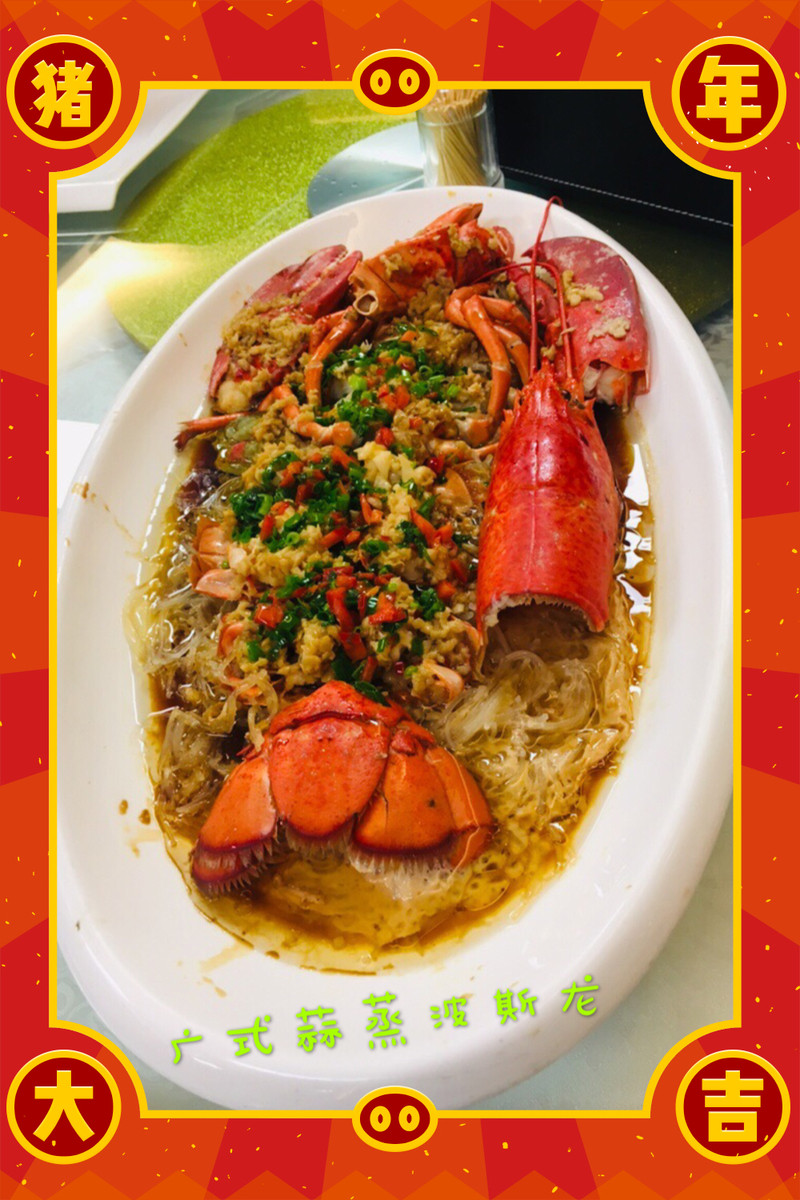




Depart from the hotel at 20:45 and go for a walk.

At 21:30, I went back to my room to rest.
The next day (February 5, 2019/New Year's Day)
Hotel → Zhenjiang Traditional Pot Noodles → Jinshan Scenic Area → Jinshan Temple → Hotel → Beigu Mountain → Lao Yanchun → Hotel
Depart from the hotel at 08:00 and walk to Zhenjiang traditional pot lid noodles. The distance is 980 meters and the journey takes about 16 minutes.
Arrive at Zhenjiang Traditional Pot Noodles at 08:30 for breakfast. (After breakfast, Sanye walked back to the hotel to pick up the car.)

Depart from Zhenjiang Traditional Pot Noodles at 9:00 and drive to Jinshan Scenic Area. The journey is 4.2 kilometers and about 10 minutes.
Arrive at Jinshan Scenic Area/No. 62 Jinshan Road (Jinshan Temple) at 9:20 for fun and lunch.
Jinshan is located northwest of Zhenjiang City, at an altitude of 43.7 meters and only 3 kilometers away from the center of Zhenjiang City. It was originally an island in the center of the Yangtze River. Later, the Yangtze River moved north, and Jinshan was connected to the land in the south in the late Guangxu period of the Qing Dynasty. The scenic area is divided into two major sections: Jinshan Temple in the east and Zhongliangquan in the west. It is separated by Yiquan Road in the middle. Jinshan Temple is the main attraction. Popular stories such as the White Lady flooding Jinshan with water, Liang Hongyu beating the drum and fighting Jinshan all take place here.

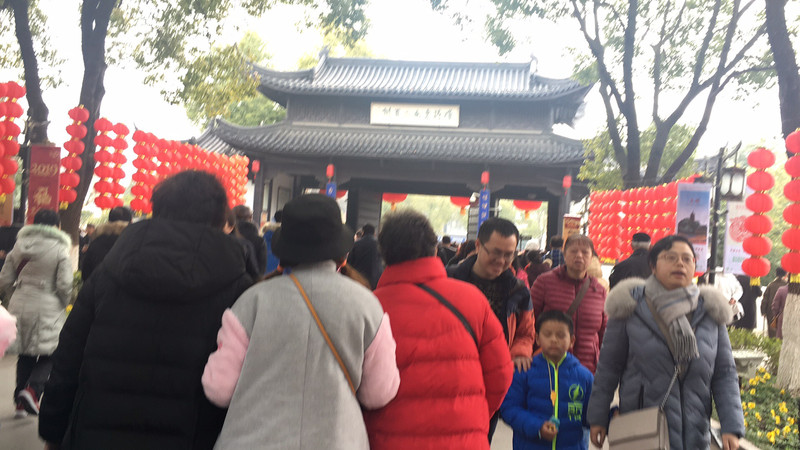
Jinshan Temple, also known as Jiangtian Temple, was built during the Daxing period of Emperor Yuan of the Eastern Jin Dynasty (about 320 AD). All the temples and towers of the temple were built against the mountains. Looking at Jinshan from afar, you can't see the mountains in the temple. There is a saying that "Jinshan Temple wraps the mountains". The gate of Jinshan Temple faces west, and the main buildings are distributed east-west. The process of visiting the temple is also a process of climbing Jinshan Mountain. The Daxiong Hall is surrounded by carved white stone railings and covered with golden glazed tiles, which is very magnificent. Walking up the steps behind the Daxiong Hall, you can still see Liang Hongyu beating the drum and fighting against the golden mountain.






Depart from Jinshan Scenic Area at 14:00 and drive back to the hotel.
Arrive at the hotel at 14:20.
15:00 Hotel nap.
Depart from the hotel at 17:30 and drive to Lao Yanchun.
Arrive at Lao Yanchun at 17:45 for dinner.
Laoyanchun (Jiefang Road Branch) is a century-old store and one of the oldest hotels in Zhenjiang. At No. 27 Jiefang Road, heading north at Dashikou Crossing, most of the diners are tourists. The meat is the best to eat. It melts immediately in the mouth and is very fragrant. It must be served with Zhenjiang balsamic vinegar and dipped in it.











20:30 Lao Yanchun set off and drove back to the hotel.
Arrive at the hotel at 21:45.
Day 3 (February 6, 2019/New Year's Day)
Hotel → Yangzhou (Hongqiafang) Dongyuan Restaurant → Dongguan Street → Geyuan → Yangzhou Hongqiafang → Hotel → Suning Plaza (Red Old Man Creative Huaiyang Cuisine/Dinner) → Hotel
Depart from the hotel at 09:30 and drive to Yangzhou City, Jiangsu Province. The distance is 32.1-40.4 kilometers, the journey is 56 minutes to 1 hour and 12 minutes, and the highway toll is 33-36 yuan.
Arrive in Yangzhou City, Jiangsu Province at 11:00.
Yangzhou, known in ancient times as Guangling, Jiangdu, and Weiyang, dates back to 486 BC. The Yangzhou section of the Grand Canal of China was included in the World Heritage List; Yangzhou was included as one of the World Heritage Cities declared by the China Maritime Silk Road.

Arrive at Hongqiao Square at 11:15 for lunch.
Hongqiofang Commercial and Leisure District covers an area of 4.85 hectares, has an enclosed Chinese antique building and 509 planned parking spaces. The facades of 11 buildings use glass curtain walls in large areas. The combination of blue bricks and imitation wood structures adds a fashionable atmosphere and commercial atmosphere. The imitation wood grille of metal components and the use of traditional roofs make the neighborhood more cultural.

The overall positioning of the block is Slender West Lake Cultural and Leisure Characteristic District. It is a one-stop, all-weather, modern fashionable leisure and commercial district that integrates catering, leisure and entertainment, retail, and exhibitions and performances with history and humanities as the axis.
Dongyuan Xiaorestaurant has developed Yangzhou Huaiyang traditional snacks and Huaiyang specialty dishes with a novel model of snacks takeout and serving snacks. The varieties are rich and the flavors are pure. The dishes are very popular among diners and are priced close to the people.

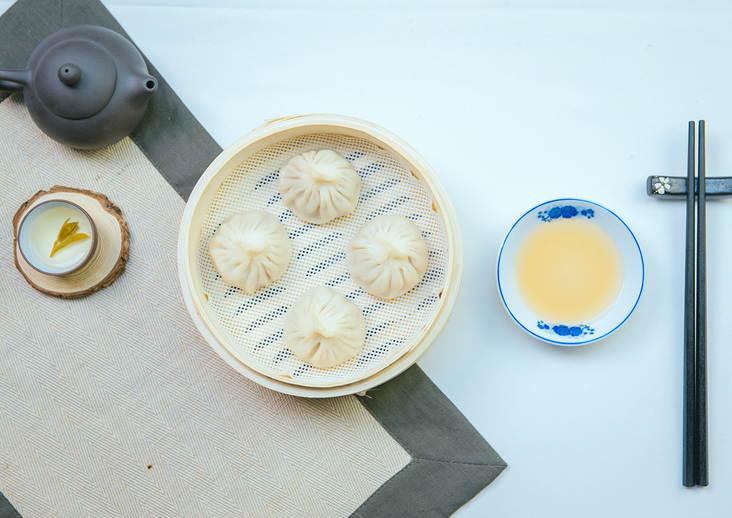


Dongyuan Xiaoguan has a different urban flavor. We have different lives but can have the same taste experience. We taste the taste of living elsewhere and bring together the food culture of the north and south. Exquisite and meticulous carving of ingredients, complex and careful production processes, Yangzhou's delicacy and romance permeate every corner of the Dongyuan Pavilion.
Depart from the restaurant at 12:15 and walk to Guandong Street. The distance is 1.7 kilometers and the journey is 26 minutes.
Arrive at AAAA Scenic Area on Dongguan Street at 13:45 and have fun.
The AAAA Scenic Area of Dongguan Street Historical District is located in the center of Yangzhou City. The main street is paved with stone slabs. Walking on the road, you can see the salt merchant compound with blue bricks and gray tiles from time to time. The concentration of delicious food and local specialties adds to the fun of shopping for tourists. It is worthy of being called "a representative historical old street in Yangzhou City."


The original street surface was paved with long slabs. Dongguan Street used to be not only an important water and land transportation route in Yangzhou, but also a center of commerce, handicrafts and religious culture. The streets are bustling and lined with businesses. There are nearly 100 businesses and businesses are booming. There are nearly 100 Lu Chen Xing, Youmi Fang, Fresh Fish Shop, Eight Xian Shop, Melon Fruit Shop, and Bamboo Shop.
Geyuan is located at No. 10 Yanfu East Road in the northeastern corner of Guangling District, Yangzhou City, Jiangsu Province. It has won the title of the third batch of "National Key Cultural Relics Protection Units" and the "First Batch of National Key Parks". This private garden of Yangzhou salt merchants 'residence in the Qing Dynasty is famous for its planting of green bamboos and its rockery in the four seasons of spring, summer, autumn and winter. It was built into a residential garden by Huang Zhiyun, the chief salt merchant of Lianghuai River, in the 23rd year of Jiaqing Dynasty (AD 1818).


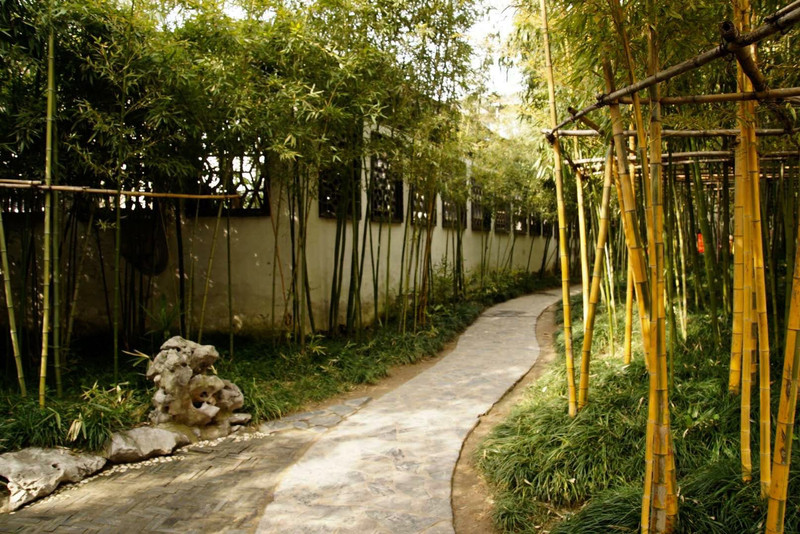

Geyuan is famous for its stacked stone art. The rockery of bamboo shoots, lake stones, yellowstone and Xuan stones in the spring, summer, autumn and winter combines the rules of gardening with the principles of landscape painting. It has been praised by Mr. Chen Congzhou, the master of the garden, as an "isolated case in China".
Depart at 14:00 and walk back to Hongqiao Square. The distance is 1.7 kilometers and the journey is 26 minutes.
Arrive at Hongqiao Square at 14:30 and pick up the car.
Depart at Hongqiao Square at 14:45 and drive back to Zhenjiang, Jiangsu.
Arrive at the hotel at 16:00 and take a nap.
Depart from the hotel at 18:00 and drive to Suning Square. The distance is 2.2-2.7 kilometers and the journey is 10 minutes.
Arrive at Suning Square at 18:20.
Arrive at Red Old Man Restaurant at 18:30 for dinner.
Old Man Hong creatively Huaiyang cuisine and adheres to the concept of using creative Huaiyang cuisine to create a Michelin restaurant belonging to the Chinese people.





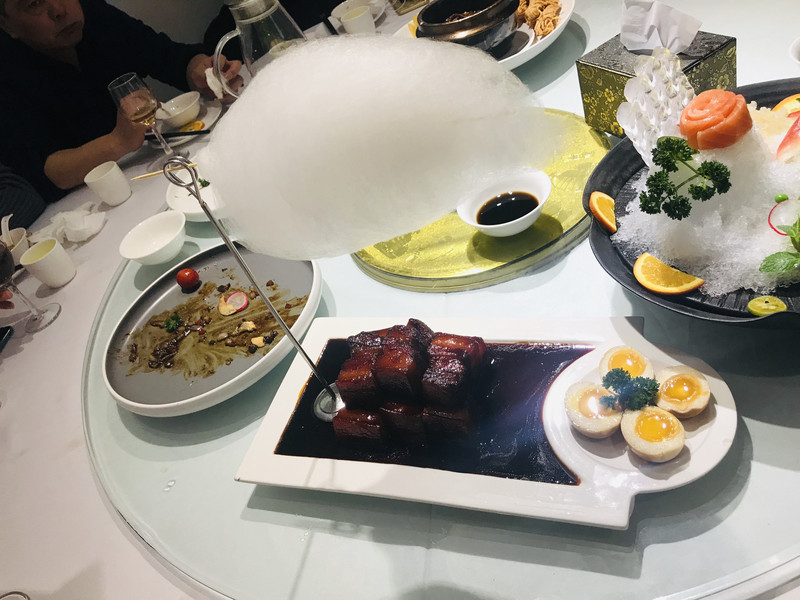

Depart from the hotel at 20:30 and return to the hotel by car.
Arrive at the hotel at 20:45.
Day 4 (February 7, 2019/New Year's Day 3)
08:30 Depart from Ramada Zhenjiang Hotel and drive to Jiaoshan AAAAA Scenic Area. The distance is 3.3 kilometers and the journey is 7 minutes.
Arrive at Jiaoshan AAAA Scenic Area at 08:45 and have fun.
Jiaoshan Scenic Area is a national AAA-level tourist attraction and one of the "Three Mountains of Zhenjiang"(the other two are Jinshan and Beigu Mountains). It is famous for its natural mountains and rivers, simplicity and elegance.
After entering the park, take a ferry boat.

Jiaoshan is an island surrounded by water on all sides in the Yangtze River. It has a height of 70.7 meters and a circumference of more than 2000 meters. It is named after Jiao Guang lived in the mountains in the Eastern Han Dynasty. Surrounded by blue waves, lush forests, green grass, green mountains, and jade floating rivers. Facing the Xiangshan Jiajiang River on the other side, it is the saying that "Ten thousand East Sichuan notes, one island is neutral". It is referred to as a "water park" in the south of the Yangtze River and is known as the "floating jade in the river." Being there is a feeling of "a pillar in the middle of the stream", as if climbing Putuo Fairy Island and attracting tourists.

Dinghui Temple moves eastward from the "Sea Buyang Waves" Pavilion, and you can see a thousand-year-old temple under an eight-hundred-year-old ginkgo tree, namely Dinghui Temple. There are four large seal characters "Henghai Da Hang" embedded in the wall, and a banner "Dinghui Temple" is hung on it.


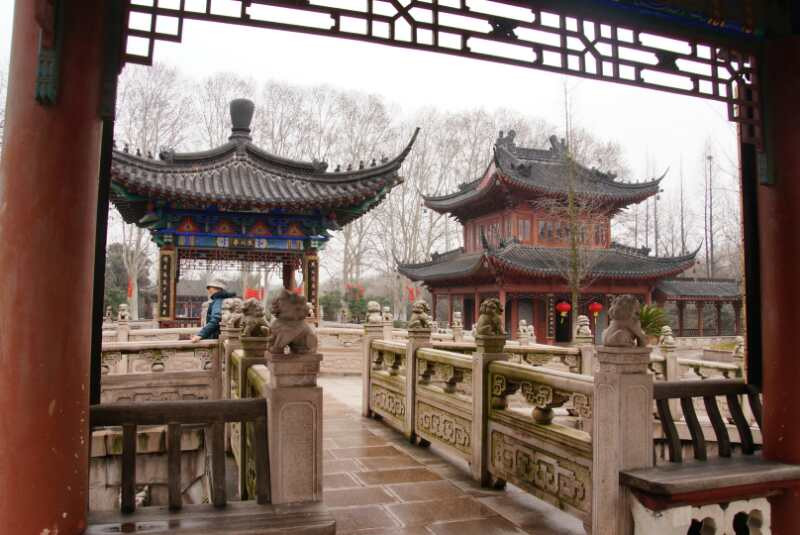
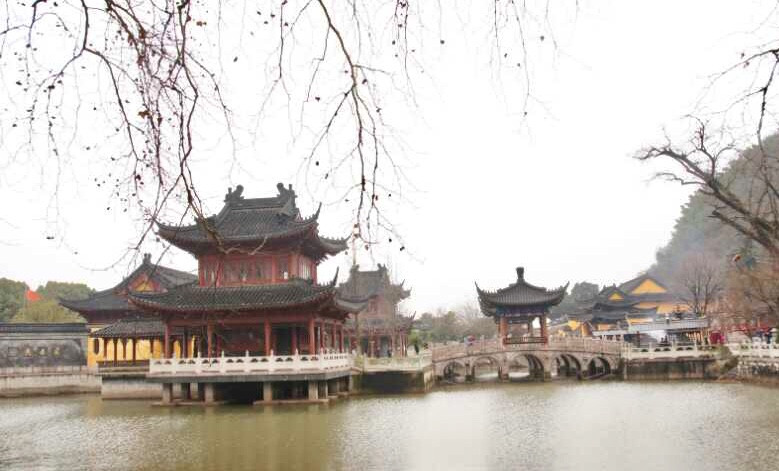
Dinghui Temple, formerly known as Puji Temple, was built during the Xingping period of the Eastern Han Dynasty, more than 1,800 years ago. Ji Laishan, a disciple of Master Xuanzang in the Tang Dynasty, created the Daxiong Hall, which was renamed Puji Zen Temple in the Song Dynasty. Jiaoshan Temple was renamed in the Yuan Dynasty and was later destroyed in fire. During the Xuande period of the Ming Dynasty, Monk Jue initially rebuilt it. In the Qing Dynasty, Kangxi changed the name of the temple to Dinghui Temple when he visited Jiaoshan during his southern tour. It is still in use today, and the temple still maintains the architectural style of the Ming Dynasty.
The Fort is located at the foot of the mountain on the east side of Jiaoshan. It is rocky and has eight cannon fortresses consolidated with lime soil in a fan shape, facing the estuary of the Yangtze River. This is the famous Jiaoshan Fort.

The entire battery is of a dark fortress type. Each battery fort is attached to a small ammunition depot, and there is another large ammunition depot west of the south end of the battery fort. The whole thing is made of concrete poured in layers and is extremely strong. During the Anti-Japanese War, the fort was destroyed by the Japanese army, and the existing ruins were provincial-level cultural relics protection units.
Xijindu Ancient Street AAAA Scenic Area, 3.9 kilometers away, about 10 minutes.
The Wanfo Pagoda is located at the peak of Jiaoshan Mountain. The tower is 42 meters high, 70.4 meters above sea level, and has a building area of 583 square meters.
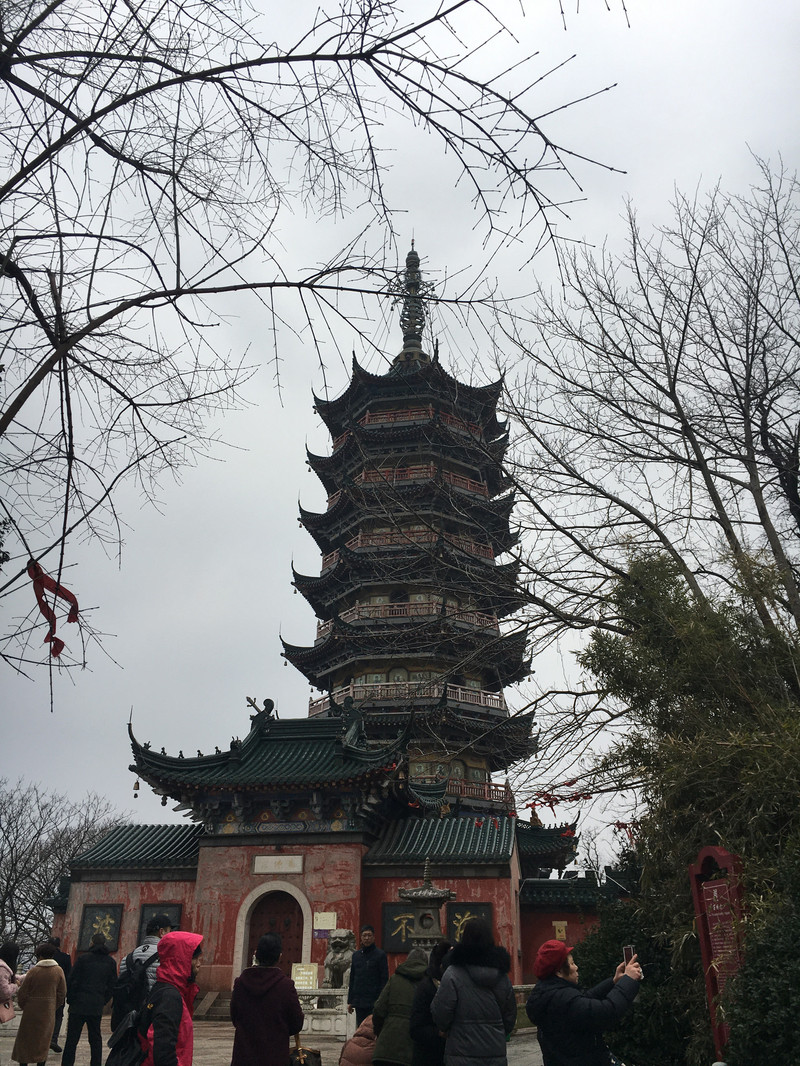
The Ten Thousand Buddha Pagoda is an antique pagoda with Jiangnan style in the Ming and Qing Dynasties. There are seven levels and eight sides, with celestial palaces above and underground palaces below. There are two sets of stairs inside the tower that diverge up and down, and there are railings on the outside. Each floor has four corridors, and there are views on all sides. Looking back on the railing and looking into the distance, you can have a panoramic view of the river and sky. Eight beams of light radiate from the sky at night to guide the passing shipmen.
The Xijiang Tower stands at the top of the east peak of Jiaoshan Mountain. It was originally named Xijiang Pavilion, also known as Xijiang Tower. Because there are wood-carved Buddha statues on all sides in the pavilion, people are also called the Four-sided Buddha Pavilion. The building is octagonal in shape, and the entire structure is made of cement imitation wood. There are stairs spiraling up, corridors with four links, and views on all sides. The building has two floors. The upper level banner is inscribed with the words "Draw River Tower", and the lower level banner is inscribed with the words "Jiangshan Victory".

Tourists climb the building and overlook the beautiful scenery from north to south of the Yangtze River, and have a panoramic view of the best places. The green fields in the north of the Yangtze River are vast, with crisscrossed paths and endless, and the green mountains in the south of the Yangtze River are stacked with hills.

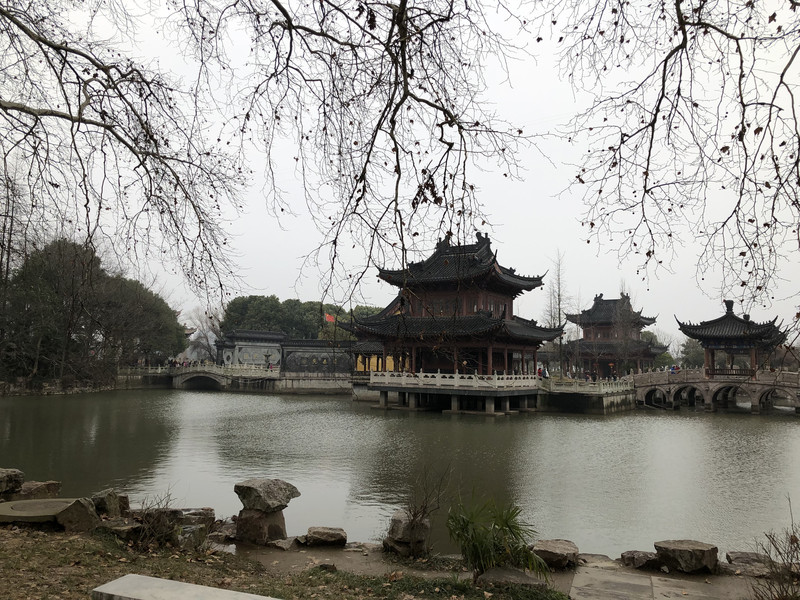
Depart from Jiaoshan AAAAA Scenic Area at 11:00 and drive to Xijindu Ancient Street. The distance is 6.6-8.6 kilometers and the journey is 16-20 minutes.
Arrive at Xijindu Ancient Street at 11:30 for lunch and play.
Zhenjiang Restaurant is located at the foot of Yuntai Mountain, next to Xijindu Ancient Street, with very convenient transportation. Hence the name, Zhenjiang Restaurant is a restaurant that mainly handles local dishes. Zhenjiang Restaurant Breakfast is quite famous in the local area. Many locals drive here in the morning to have a delicious breakfast.
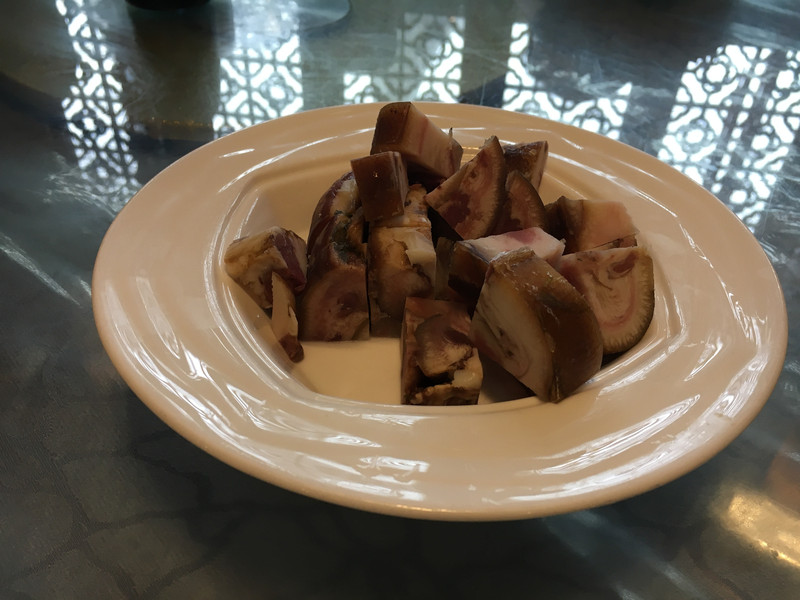


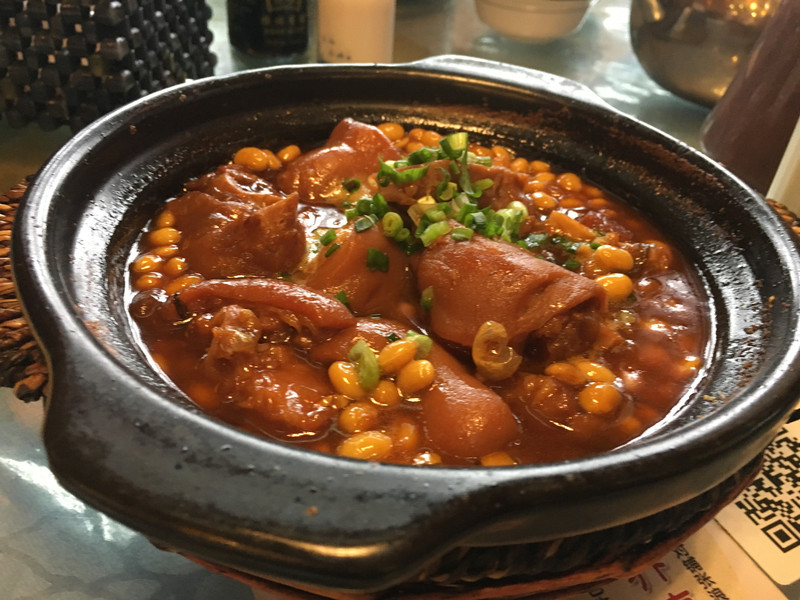

Among them, Zhenjiang Restaurant steamed buns are the most famous. The characteristic steamed buns are different from those on the market, so they are loved by people. The store is open and divided into two floors. There is a lobby downstairs and a private room upstairs. It is very comfortable and beautiful.






The taste is so good that all the dishes and snacks have been "dried".
Xijindu, also known as Xijindu Historical and Cultural District, is located in the northwest of Zhenjiang City and is a 15-minute walk east from Jinshan Park. There is an old house with rich historical atmosphere here, where the famous Xijindu Ancient Street is located. Xijindu has been a ferry terminal since the Three Kingdoms period. Later, due to the gradual movement of the river bank north, the ferry was long gone, leaving only the ancient Xijindu street on the mountainside of Yuntai Mountain.
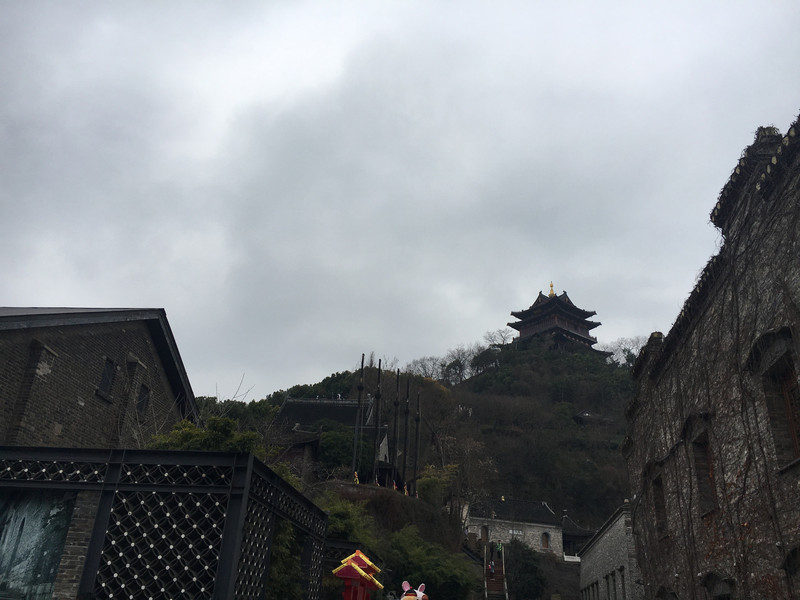
You can climb dozens of steps from the east to reach Xijindu Ancient Street on the mountainside. The farther you go west, the lower the terrain. The ancient street is covered with old bluestone slabs, and on both sides are traditional houses and gable walls made of blue bricks, which is very vicissitudes. In the eastern section of Gujie, there is a "Zhaoguan Stone Pagoda" built from the Yuan Dynasty. It is the only stone tower crossing the street in China. Tourists can pass through under the tower. Next to the stone tower is Guanyin Cave, built in the Song Dynasty, which was dug out of the mountain to pray for peace; opposite is the Life Rescue Club, a water safety rescue agency built in the Qing Dynasty. Both attractions charge fees.

Continuing west, there are small scenic spots such as small mountain buildings and waiting for crossing pavilions. The small mountain building is a small wooden building built in the Tang Dynasty. A plaque with Mr. Yu Qiuyu's inscription "Jinling Ferry" hangs under the eaves of the building. The front of the building overlooks the layers of green tiles of the old houses in the block. The Taidu Pavilion was once a place for ancient people to wait for boats or rest and shelter from the rain. It is said that Emperor Qianlong once stayed in this pavilion. After passing the Taidu Pavilion, you will see shops of all kinds open on both sides, including teahouses, craft shops, and noodle shops. They are filled with various interesting shop signs, which is quite a bourgeois atmosphere. If you get greedy, you can try snacks such as Zhuangyuan Cake and stinky tofu. The price is not expensive.
The ancient street is not long, and it takes about half an hour to walk and stroll around. If you are still not done, you can return to the Waiting Pavilion on the same road. From here, you can go down the downhill road to the Old Wharf Cultural District. There are many retro old buildings such as the British Concession Industry Bureau and Texaco Foreign Exchange. You can take photos here. You can also visit the Zhenjiang Museum next to the ancient street, or climb the Yuntai Pavilion on the top of the mountain behind the ancient street to overlook the Urban area. The old neighborhood is especially beautiful at night.

Depart from Zhenjiang Xijindu at 14:00 and return to the hotel.
Arrive at the hotel at 14:20 and take a nap.
Dinner at 18:00. [According to the weather forecast, there will be cold air. Considering that there are elderly people accompanying us, we decided to choose takeout-KFC]
Day 5 (February 8, 2019/New Year's Day 4)
Hotel → Beigu Bay Square → Hejia Huaiyang Cuisine (lunch) → China Zhenjiang Vinegar Culture Museum → Hotel → Delicious Products (dinner) → Hotel
06: It was dawn on the 20th day, and I looked out through the window. Wow, overnight, it was already white outside...

Depart from the hotel at 08:20 and walk to Beigu Bay Square opposite the hotel-to watch the snow scenery.



The snow has accumulated very thick, and it must have been falling all night!









Depart from Beiguwan Square at 10:15 and return to the hotel.
Arrive at the hotel at 10:30. The three of them, cedar vegetables, pickled vegetables, and meatballs, walked directly to Jiefang Road to find a lunch place.
At 11:00, I saw Hejia Huaiyang cuisine on Jiefang Road. When I entered the restaurant, I found that Shangyu had a large table nearby that could accommodate more than a dozen people, so I immediately notified the "big troops" to go.
Depart from the hotel at 11:15, and the "big team" took a self-driving ride to Hejia Huaiyang cuisine. The distance is 1.5 kilometers and the journey is 5 minutes.
Arrive at Hejia Huaiyang Cuisine at 11:25, lunch.
Hejia Huaiyang Cuisine is the representative of Zhenjiang's traditional Huaiyang cuisine, inheriting every move of the orthodox Huaiyang Cuisine. Perhaps here you can regain the pride of Huaiyang Cuisine as the "master of state banquets". Here, the old memories of Zhenjiang have never died out.

Looking from the outside, the small Western-style building with the style of the Republic of China will remind you of some memories of old Zhenjiang in that era.










Depart from the restaurant at 12:50 and take a self-driving ride to China Zhenjiang Vinegar Culture Museum. The distance is 14.1-19.5 kilometers, and the journey is 26-38 minutes.
Arrive at China Zhenjiang Vinegar Culture Museum at 13:30 and have a tour.
China Zhenjiang Vinegar Culture Museum covers an area of more than 30 acres and a building area of 4000 square meters. It is the first professional themed vinegar culture museum in China.

This museum is located next to National Highway 312 in Zhenjiang City and was built by Hengshun Group with an investment of more than 30 million yuan. It is one of the 100 key cultural construction projects in Jiangsu Province during the Eleventh Five-Year Plan and has been included in the "Yangtze River Delta Expo Theme Experience Tour Demonstration"."Spot" is the first theme exhibition hall in Zhenjiang City that integrates cultural heritage protection, science education, industrial tourism and other functions.
China Zhenjiang Vinegar Culture Museum is divided into three main exhibition halls: vinegar history hall, old workshop, exhibition hall, and an experience hall. The entire museum uses modern forms of expression such as sound, light and electricity to comprehensively display, interpret and taste vinegar culture.




Depart from the China Zhenjiang Vinegar Culture Museum at 15:00, take a self-driving car and return to the hotel. The journey is 15.6-17.6, and the journey is 28-30 minutes.
Arrive at the hotel at 15:40 and take a nap.
Depart from the hotel at 16:40 and walk to the best food. The distance is 690 meters and the journey is 11 minutes.
Arrive at 17:00 for dinner.


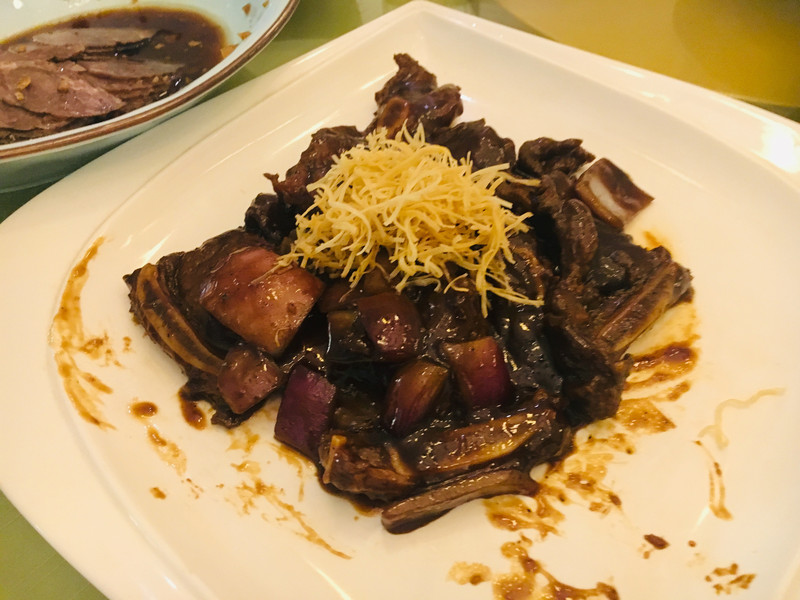












Depart at the restaurant at 19:00 and walk back to the hotel. Walking near the hotel, the snow began to fall again.

Arrive at the hotel at 19:15.
Day 5 (February 9, 2019/New Year's Day 5)
Hotel → En route service area → Shanghai
Check-out at 09:45.
Depart from Zhenjiang at 10:00, take a self-driving ride and return to Shanghai. Before leaving, take another photo of the beautiful snow scenery.





Arrive at 11:30 and pass through the service area for lunch.
Depart from the service area at 12:15, continue to take the self-driving ride and return to Shanghai.
Arrive in Shanghai at 14:30 and end a pleasant trip.
Previous Article:Boating on the Qinhuai River, Yangzhou under July--Nanjing Yangzhou for a four-day trip
Next Article:Yangzhou Dream in the twelfth lunar month
